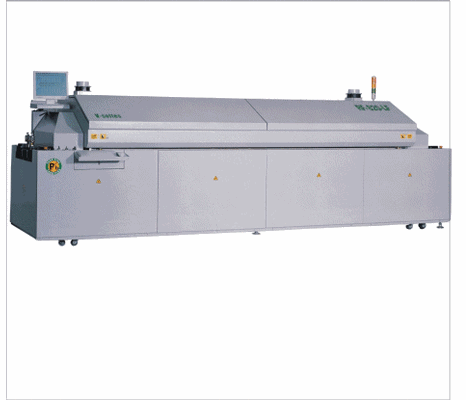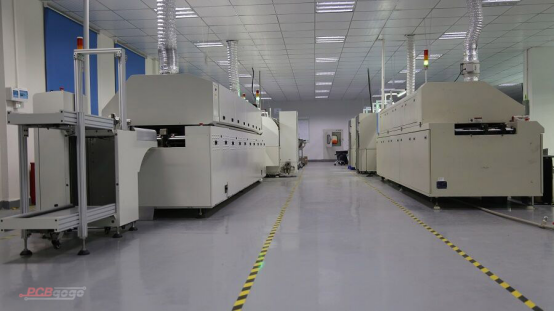

Infrared Reflow: In this method, the PCBA is passed under an infrared lamp. There are many different types of reflow soldering. To avoid these problems the most common soaking time of 30 seconds to 2.5 minutes exist. As if the temperature change happens too quickly, the components on the PCB develop problems, such as, cold solder joints, charred boards, tombstoning and uneven wetting. It is important to ensure that the temperature gradient is not very steep. The PCB then enters the cooling phase which occurs at 4 degrees Celcius per second. During the reflow process the PCB is taken to a temperature approximately 5 degrees Celcius lower than the lowest temperature failure value of a component placed onto it, but 20-40 degrees Celcius higher than the temperature required to melt the solder and allow “ wetting”, as stipulated in IPC-7530, to take place. The PCB is now primed and the reflow process can begin. The PCBs then stay at the soak temperature for 60 to 120 seconds till all parts of the PCB are at the same temperature. This step is also important to allow any volatile liquid trapped in the solder or the PCB to evaporate. The PCBs undergo linear heating in the preheat phase where the goal is to get the PCBs to soak temperature without any cracking or deforming of the ICs, and the PCB. All four stages have a carefully controlled temperature gradient measured in Celcius per second which is stipulated in IPC-7530 to be around 3 Degrees Celcius/Second. The reflow soldering process consists of four stages - preheat, soak, reflow and cooling. The PCB is then passed through a reflow oven which is maintained at a particular temperature that results in the formation of solder joints. The paste is sticky, so the components stick to the board. A mixture of solder paste and flux is deposited on the PCB where the component leads need to be connected to the copper traces. Reflow profiles or processes that are not well optimised can lead to poor or non-wetting, damaged components or cold soldering.Īfter soldering the boards are inspected in detail.Reflow soldering is a soldering process that is used to solder components on a Printed Circuit Board.

The processed board is cooling down in the last zones of the reflow oven, the solder alloy solidifies and makes the solder joints. The component that has the lowest maximum temperature allowance will define the maximum temperature. This maximum temperature must remain under the maximum allowed temperature of the components. In the third section the solder paste is melted and the process reaches its maximum temperature. The Temperature gradient is important because too quick changes of temperature can cause damage to components.ĭuring the thermal soak the flux is activated to reduce oxidation of pads and leads of components and improve wetting. The aim of the preheating stage is to accumulate heat smoothly in the board and the components. Reflow solder profiles usually have four stages, preheat, thermal soak, reflow and cooling. The solder profile is influenced by the number of layers in the PCB, the copper distribution on the board, the number and size of components. Solder profiles need to be optimised for each individual assembly job. Multiple segments help to get an optimised heat transfer and minimum temperature differences between different points on the PCBA. These are long convection ovens with many heating zones that together create a soldering cycle.Įach heating zone of the oven has a regulated temperature set to the solder profiles for the assembly process. The solder paste melts during this process and cools down again to create a good solder joint. During the Pick & Place operation, components are glued to the board by the solder paste.Ī reliable connection is made during the reflow soldering process.


 0 kommentar(er)
0 kommentar(er)
